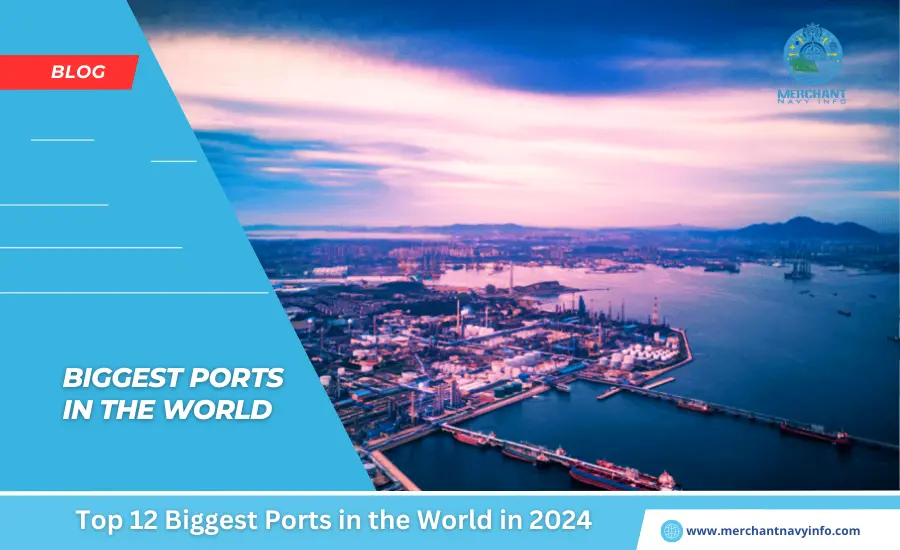
A shipping port is a multi-purpose area maintained for safe and reliable transportation. A port is a place on a coast that can be used primarily for docking ships and transferring passengers and cargo. Many ports around the world have been built and operated to provide superior waterway transportation. Ports can be ranked based on various criteria, such as cargo volume and container size. The capacity of a port is measured in TEUs (Twenty-Foot Equivalent Units). Based on this unit of calculation, we have also rated ten shipping ports as the largest port in the world.
Below Are The 12 Largest Ports In The World In 2024
1. Port Of Shanghai
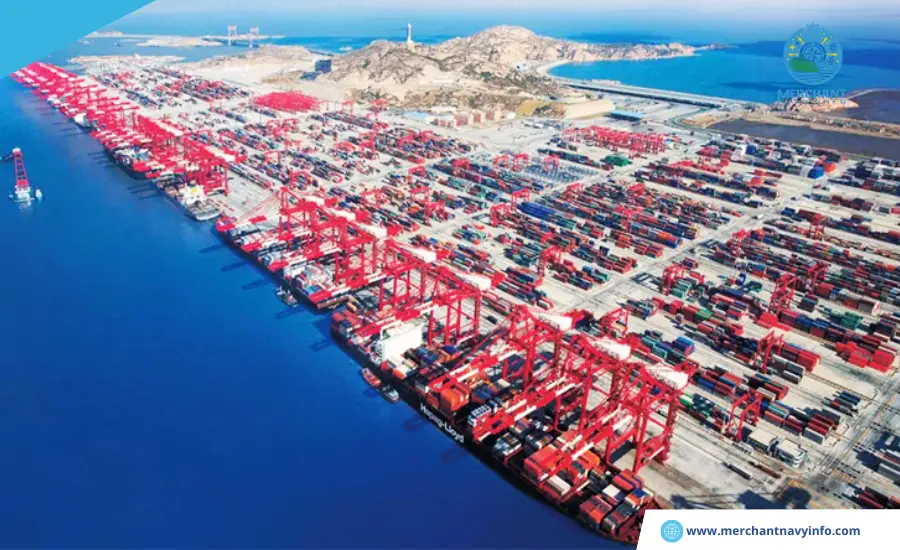
Shanghai, China With five working areas, the Port of Shanghai has overtaken the Port of Singapore to become the largest port in the world. It is located in Shanghai, China. The Port of Shanghai, which has both sea and river ports, handled 40.2 million TEUs from January to October 2023. The Port of Shanghai is an important source of economic activity in the Yangtze River region, contributing to the improvement of the financial situation of provinces such as Zhejiang, Jiangsu, and Henan.
It has the capacity to handle approximately 744 million tons of cargo and can efficiently manage 325 million standard TEU containers at one time. Covering an area of 3,619 km² of the Yangtze River delta or estuary, the port is owned by Shanghai International Port Group (SIPG).
2. Port Of Singapore
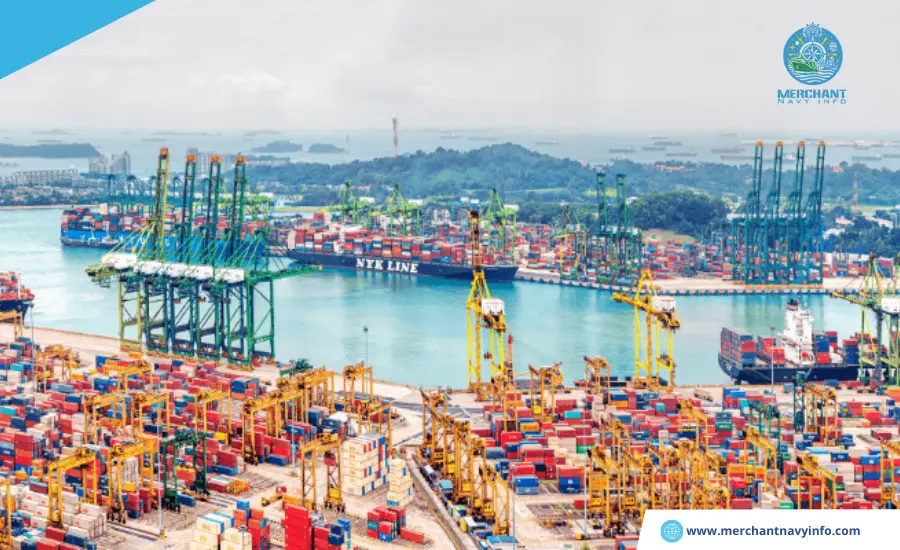
The Port of Singapore was once the world’s largest port but has now dropped a few places and is ranked second in its category. From Singapore’s economic point of view, the Port of Singapore plays a very important role. He serves a large re-export market. The Port of Singapore is connected with more than 600 ports in more than 100 countries. In terms of transshipment, this shipping port handles one-fifth of the world’s cargo containers and is responsible for the transportation of almost 50% of the world’s crude oil supplies.
The Port of Singapore’s cargo handling capacity is about 537.6 million tons. The port receives about 140,000 vessels per year. From January to August 2023, the port handled 392.3 million tonnes of cargo. PSA Singapore cooperates with Jurong Port to manage the port and various port terminals.
3. Port Of Ningbo
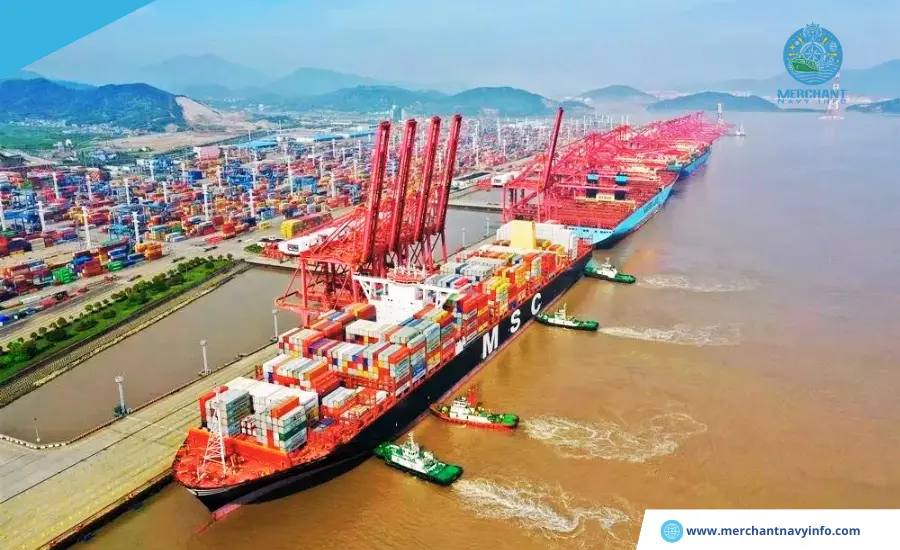
Ningbo-Zhoushan, China Established in 2006 as a joint project between the Port of Ningbo and the Port of Zhoushan, the Port of Ningbo-Zhoushan is the second-largest seaport in the world. Serving three rivers, the Yangtze, Yongchuan, and Caintan, the port is expected to develop greatly with the construction of the new terminal. The Port of Ningbo in Zhejiang Province has a handling capacity of over 453 million tons of cargo, second only to the list of the world’s largest ports. It handled 30.2 million TEU from January to October 2023, with a value of 156 million TEU. The recent merger of this port with the Port of Zhoushan has increased the combined TEU capacity of both ports to 16.83 million TEU.
4. Shenzhen Port
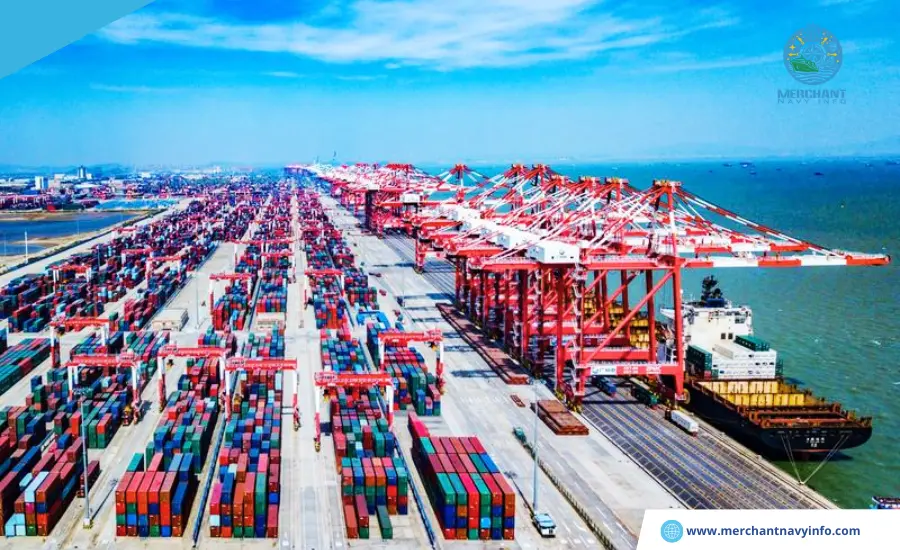
Shenzhen Port includes the ports of Yantian, Dapeng, Nanshan, Daqiang Island, Xiaoqiang Island, Daqiang Bay, and Bao’an, located along the coast of Shenzhen, China. More than 40 shipping companies are based in Shenzhen Port, providing transportation services to more than 130 countries worldwide. Approximately 560 ships arrive at the port every month. The port has 140 berths, of which 43 are berths for vessels over 10,000 DWT, 18 container berths, nine receiving berths, 18 passenger ferry berths, and 23 non-production berths. The Port of Shenzhen handled 24 million TEUs in the first ten months of 2023, compared to 28.77 million TEUs in 2021.
5. Port Of Qingdao, China
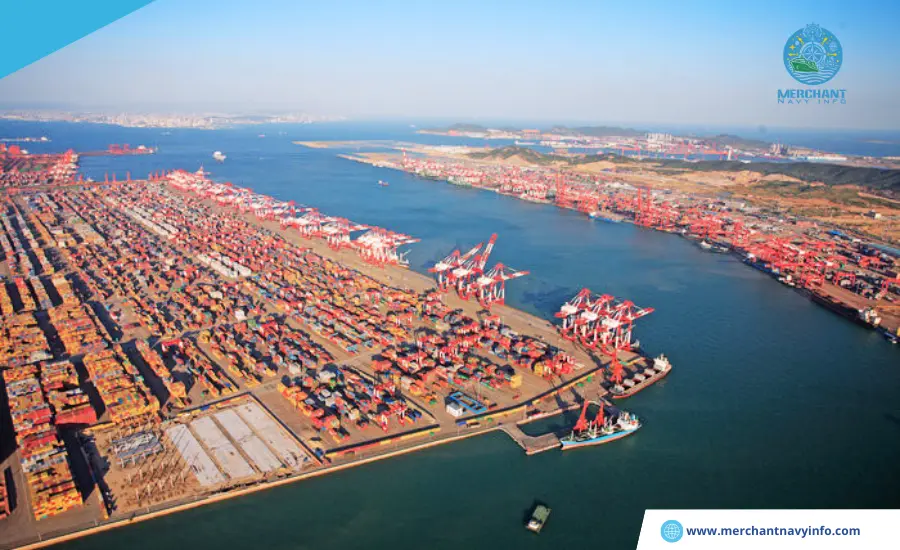
The world’s largest iron ore port, or “Port of Qingdao,” is located at the entrance to Jiaozhou Bay on the Shandong Peninsula and ranks 8th in the world’s largest port rankings in terms of loading capacity. The port is managed by the state-owned Qingdao Port Group and is self-sufficient, with a handling capacity of over 400 million tons. It is China’s largest crude oil shipping port, handling 23.89 million TEUs in 2023. The port was developed by integrating three ports: Huangdao Oil Port, the old port of Qingdao, and the new port of Qianwan. The port connects about 130 countries through a network of about 450 ports. It is the only port in the region with high-tech facilities and an established industrial area.
6. Port Of Guangzhou
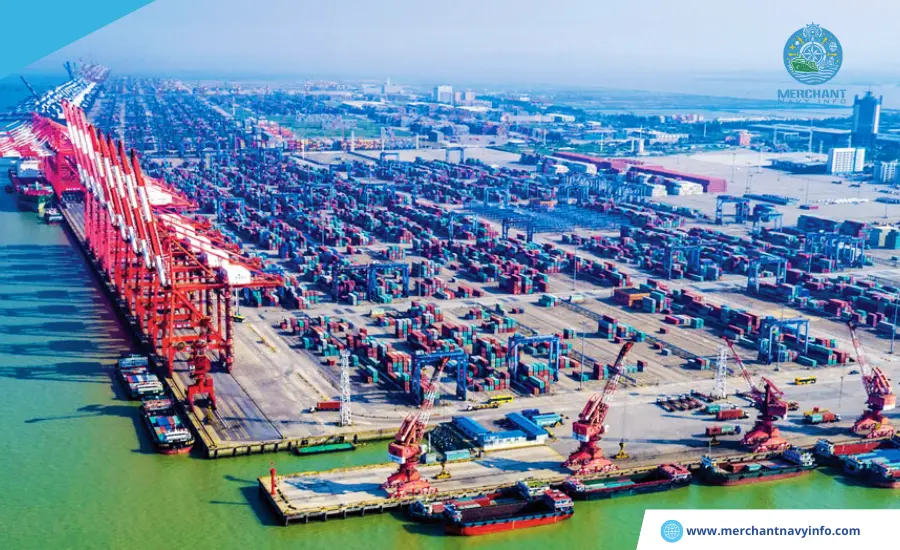
China Guangzhou, the largest port in southern China, is connected to more than 300 ports in nearly 100 countries. The port forms the center of the industrial belt in the Guangxi Zhuang Autonomous Region, Yunnan, Hunan, and Jiangxi regions. Huangpu Port is also part of the Guangzhou Port. The handling capacities of Tianjin Port and Guangzhou Port are not very different. The Port of Guangzhou can handle over 460 million tons of cargo. In 2023, 20.8 million TEUs were handled.
In its initial stage in 1999, the port was built between the Pearl River Delta. The initial stage, it was only designed to handle 100 million tons of cargo. However, this capacity was expanded and expanded, and the current total cargo handling capacity has reached about 460 million tons, more than four times the 1999 100 million tons. This expansion of port capacity has led to increased trade and increased cargo traffic from these ports.
7. Port Of Busan, South Korea
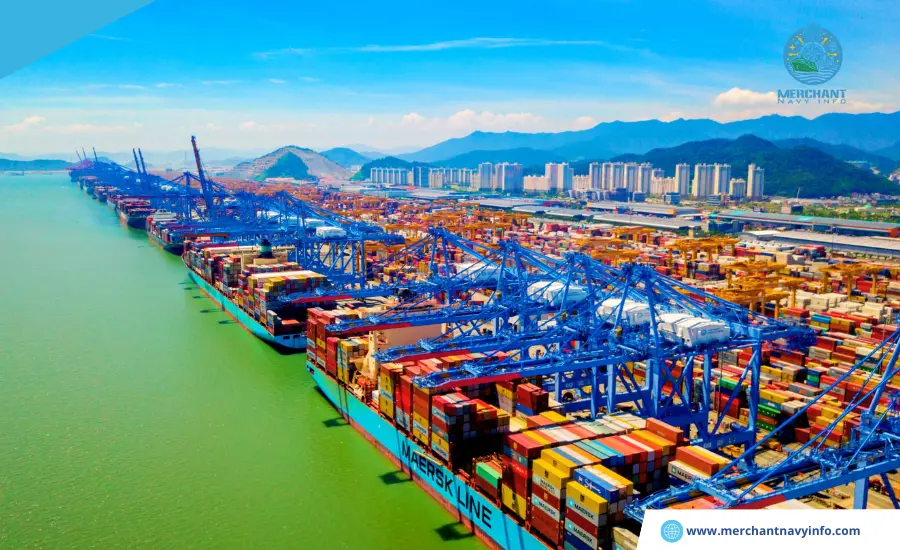
The Port of Busan, also known as Pusan Port, is South Korea’s largest port and second-largest city. It is the tenth-largest port in the world and is located on the Nakdong River. The port is an important trading hub between Pacific and Eurasian countries. The Port of Busan is located in the Nakdong River Delta. Its cargo throughput is approximately 298 million tons. In 2022, 22 million TEUs were handled.
The Busan Port Authority manages and operates the port and is responsible for its proper operation. Gamcheon Port and Dadaepo Port are the major ports that make up the Port of Busan along with Namport and also Bukport. It is an important port in South Korea and contributes to a large part of the country’s fishing production. Bulk and containerized cargo exports are handled exclusively through this port. The port has an estimated catchment area of 840,000 square meters and can handle 169 ships simultaneously.
8. Port Of Hong Kong
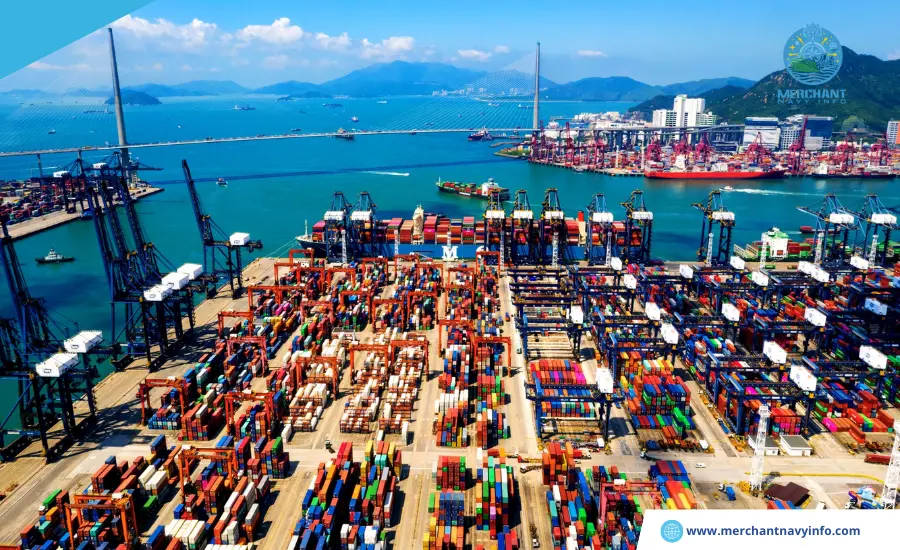
Located on the South China Sea, Hong Kong’s deep-water port is one of the world’s largest and busiest container hubs. It also handles raw materials and passengers. Victoria Harbour’s protected natural environment and also deep waters provide ideal conditions for port operations. The Port of Hong Kong has nine container terminals with an area of 2.17 square kilometers, 18 berths and also a water frontage of 6592 meters. It handles imports such as finished goods, mineral fuels, and chemicals. The most important exports include electronic equipment, clothing, jewelry, and machinery.
9. Port Of Tianjin, Tianjin, China
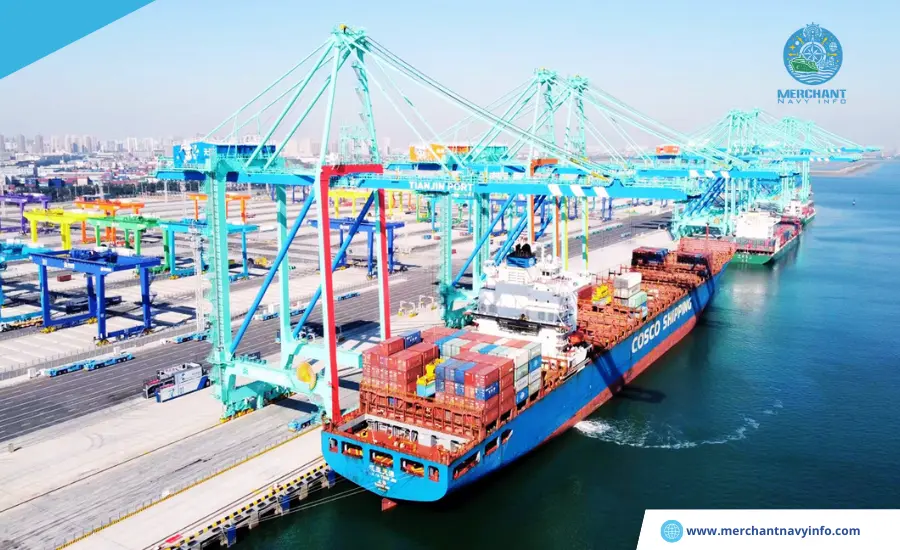
China’s Port of Tianjin is the third largest port in the world. It is the third-largest port in China and also the largest port in northern China. Recent developments in the shipping industry have led to an average increase of 5.3% in cargo volume and also 6.2% in container volume. The Port of Tianjin handled more than 11.35 million TEUs in the first half of 2023, an 8% annual increase, setting a new record. Goods throughput during this period reached 241 million tons, an increase of 2.1%. The port’s cargo-handling capacity is such that it can handle approximately 476 million tons of goods simultaneously.
10. Port Of Rotterdam, Netherlands

The Port of Rotterdam safely handles 441.5 million tons of goods. Its approximate length is 12,426 hectares or also 42 kilometers. It is surrounded by industrial parks. The Port of Rotterdam will handle 10.2 million TEUs from January to September 2023, compared to 329.9 million tons compared to 351 million tons in the same months of 2022.
The port is the deepest in Northwest Europe, allowing ships to berth at deep depths. The local government is implementing a development program to approximately double the port’s handling capacity. The European port was the world’s largest port for 42 years, from 1962 to 2004, until it was overtaken by Singapore and Shanghai. The Port of Rotterdam is the largest port in Europe.
11. Port Of Suzhou
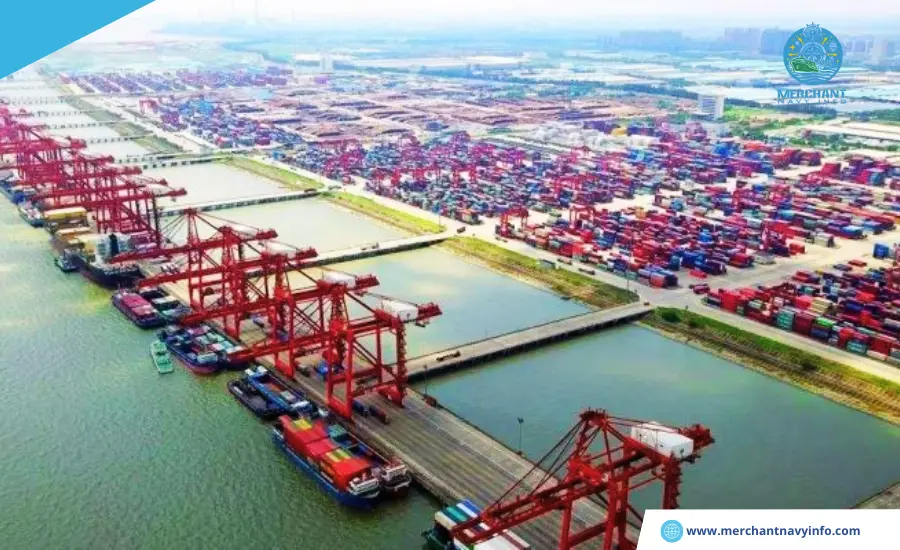
The port also ranks highly in economic activity and is one of the busiest inland river ports in the world. The port is owned and managed by the Suzhou Municipal Government. Built on the lower reaches of the Yangtze River, it includes the main port areas of Changshu, Zhangjiagang, and also Taicang. These port areas have 224 berths and are connected to more than 100 domestic and international shipping routes. The Suzhou Port Authority manages all activities at the port, which are also mainly used to transport various construction materials and coal.
12. Port Of Dalian, China
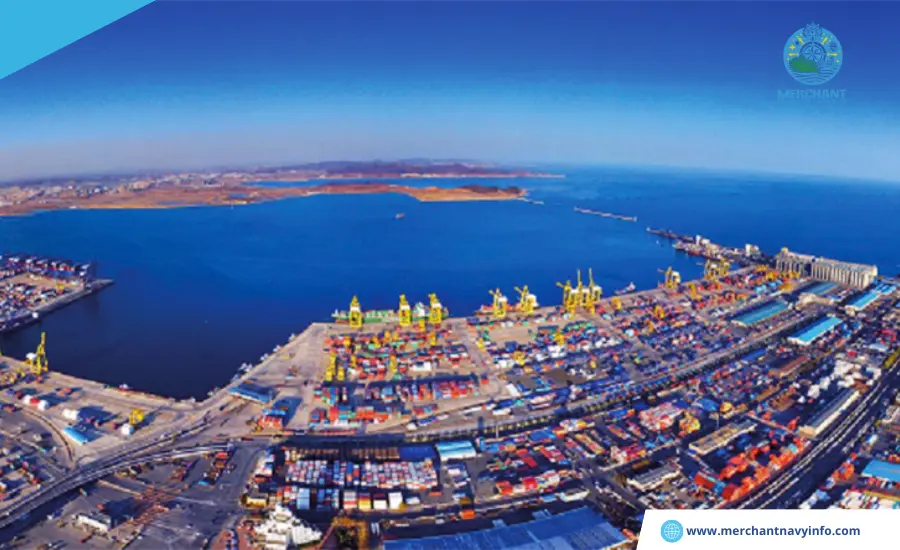
The Port of Dalian handles more than 303 million tons of cargo. The Dalian Port Company owns the port and is responsible for all port activities. Dalian Port has around 80 berths and has seven major areas: Dalian Port, Ganjinzi, Dalian Bay, Nianyu Bay, Xianglujiao, Dayu Bay, Heiruizi, and also Sirgou. The port connects more than 99 shipping lines from all over the world. It is a regional port that handles almost all the regional traffic.
Conclusion
In conclusion, it is not wrong to say that China is at the forefront of port development and management. In terms of their respective cargo handling capacity, seven Chinese ports are among the top 10 largest ports in the world. The Port of Shanghai in China. It topped the list because it has the highest cargo traffic of all the largest ports in the world. The ranking of the ports is based on container handling capacity of millions of tons. The cargo handling capacity of these ports ranges from 298 million tons to 744 million tons of cargo. This is the basis for the ranking of the ten largest ports in the world, but it is also based on other criteria such as B. The standard cargo dimensions of a TEU can be classified.









